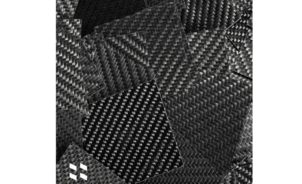In another article, we’ve discussed how using recycled carbon fiber can help OEMs/ODMs dial down the carbon emissions of their pickleball paddles.
Yet, the true measure of an eco-friendly paddle’s impact on the environment’s bottom line is found in its broad acceptance and use. Which will solely be decided by the end-consumer, the player.
For manufacturers, it is a real challenge to create products that deliver exceptional performance with the limited resources and innovation at their disposal.
Let’s review the critical metrics that designers and engineers can leverage to develop a high-performing pickleball paddle. And understand how a design targeting optimal performance, regulatory compliance, player satisfaction, and reduced environmental burden can improve the product’s competitive stance in the market.
Specifications checklist:
1. Pickleball Paddle Material Quality:
Brands often face the challenge of sourcing high-quality materials without incurring excessive costs. Adding to this issue are the current environmental standards consumers expect, which can complicate the material selection process right from the outset.
Additionally, durability is also a non-negotiable attribute since players can experience failing surface quality within just two months of regular use. And, of course, it is the quality and synergy of the materials (described below) that are critical and largely dictate the caliber of the finished product.
Pickleball paddles have a layered sandwich composition with a honeycomb core laminated by surface materials (or skin). The core and surface layers utilize distinct materials whose combination is based on compatibility, performance goals, and desired paddle characteristics.
For the surface layer of high-performance pickleball paddles, carbon fiber and fiberglass are the commonly used composite materials. These materials are essentially fibers arranged in specific directions and weaves, which are then layered and bonded to form a composite laminate.
Fiberglass is primarily used in casual play. They are robust, offer a decent amount of power, and are particularly appreciated for their control and flexibility, slightly differing from the more rigid carbon fiber paddles that are often classified as power paddles due to their stiffness.
Carbon fiber surfaces rank just behind their fiberglass counterparts in terms of popularity. They are densely woven carbon fibers, creating a lightweight yet high-performance structure. The competitive edge of carbon fiber is attributable to its rigidity, resulting in efficient energy transfer. This feature not only enables potent shots but also allows players to execute precise control over the ball, offering a distinct touch compared to the feel of fiberglass paddles.
High-performance paddle honeycomb cores typically come in two varieties: loud or soft. This is because they are generally made from either Nomex or Polymer. Polymer cores tend to be quieter and offer a softer sensation upon impact, while Nomex cores are known for their louder sound and yield a firmer hit. 95% of tournament player paddles use a Polymer core for its lightweight and durability.
Material quality is a crucial metric, with the potential for countless variations in density, layering, and composite grade. We suggest using UD/BD carbon fiber for its balance of high performance and manageable weight. It’s worth noting, as previously mentioned that carbon fiber is also more amenable to low-impact recycling compared to fiberglass.
Given carbon fiber’s pedigree in the aerospace and automotive industries, its performance is unquestionable.
Price remains the only real consideration. Yet, with pickleball’s growing popularity and players’ willingness to invest in high-performance gear, carbon fiber stands out as a compelling option.
Nonetheless, given its accessibility and cost-effectiveness, fiberglass could serve as a secondary choice depending on the budget and preference for paddle responsiveness.
2. Paddle Weight and Balance:
According to an expert author, the weight difference between the lightest and heaviest paddles is a mere 2 ounces (28.35 grams).
Lightweight paddles, which provide excellent control, typically weigh between 6 to 7.2 ounces. Mid-weight paddles, which balance control and power, can weigh as much as 8.3 ounces. Paddles exceeding that weight tend to offer less control and demand greater physical power from the player.
The ideal weight for a high-performance paddle should balance control and power, which suggests a mid-weight range as optimal. Designers can achieve this by selecting materials and construction methods that provide the necessary strength without excessive weight, ensuring the paddle remains within this target weight range for peak performance.
The weight distribution of a pickleball paddle determines its balance. If it’s head-heavy, the balance point shifts toward the head of the paddle, while a head-light or handle-heavy paddle will have its balance point nearer to the handle.
Weight distribution can affect the paddle’s overall balance and influence where the sweet spot feels the most effective to the player.
Adding weight to the face of the paddle can make it feel softer because it can dampen vibrations upon impact while increasing the power. Adding weight to the edges, known as edge weighting, can make a paddle more forgiving with an enlarged sweet spot.
Composites are favored for their directional strength – they provide robustness along the alignment of their fibers while keeping the structure’s weight low. Hence, their widespread use in the aerospace industry, where optimizing the strength-to-weight ratio is crucial for fuel efficiency and overall aircraft performance.
Between Nomex and polymer, the options for core materials, Nomex is preferred for power-focused paddles due to its smaller honeycomb cells. However, for an ideal balance, manufacturers may opt for polymer cores, which offer a lighter alternative.
3. Paddle Size and Shape:
According to the USA Pickleball Association (USAPA), the total length and width of a paddle, including any edge guard and butt cap, must not exceed 24 inches. The most common design falls within a range of about 15 to 17 inches in length, and the width typically ranges from 7 to 8.25 inches.
However, widebody paddles, which stay within the maximum size regulations but prioritize width, offer a larger sweet spot, making them more forgiving on off-center hits. On the other hand, elongated paddles may provide greater reach and are designed to optimize power and control within different play styles.
For those seeking power, a widebody paddle can be effective due to its increased surface area, which facilitates energy transfer for more powerful shots. However, the ideal paddle choice will vary based on individual player needs and preferences.
Regarding thickness, paddles that are 13 mm or thinner tend to generate more power. However, they are less forgiving of mis-hits compared to thicker paddles, such as those above 16 mm.
4. Pickleball Paddle Strength and Durability:
For high-performance paddles to maintain their longevity, it’s crucial to combine proper maintenance with careful handling to avoid damage from drops or rough use. Equally important is the construction with high-strength materials and robust bonding techniques. However, manufacturers can only control the latter through design and material selection.
Core materials in pickleball paddles are often selected for their durability, with many originally developed for their strength, fire resistance, or similar properties.
For surface material, carbon fiber, for instance, is approximately five times stronger than steel and can potentially last for decades under proper conditions. However, its lifespan can vary depending on use.
For high-performance paddles, the exceptional strength and longevity of carbon fiber are leveraged to enhance performance. Its stiffness allows for efficient energy transfer for powerful shots, while its durability helps maintain the integrity of the paddle over time, even with regular intense play.
In conclusion, the guide underscores the intricate balance manufacturers must strike when creating high-performance pickleball paddles. From selecting advanced materials like carbon fiber for strength and durability to considering the environmental impact of production, the design process is multi-faceted.
Attention to detail in weight distribution, paddle size, and core composition plays a critical role in how a paddle performs and is perceived by players. Manufacturers who heed these guidelines are well-positioned to produce paddles that not only perform exceptionally but also stand the test of time and usage.




